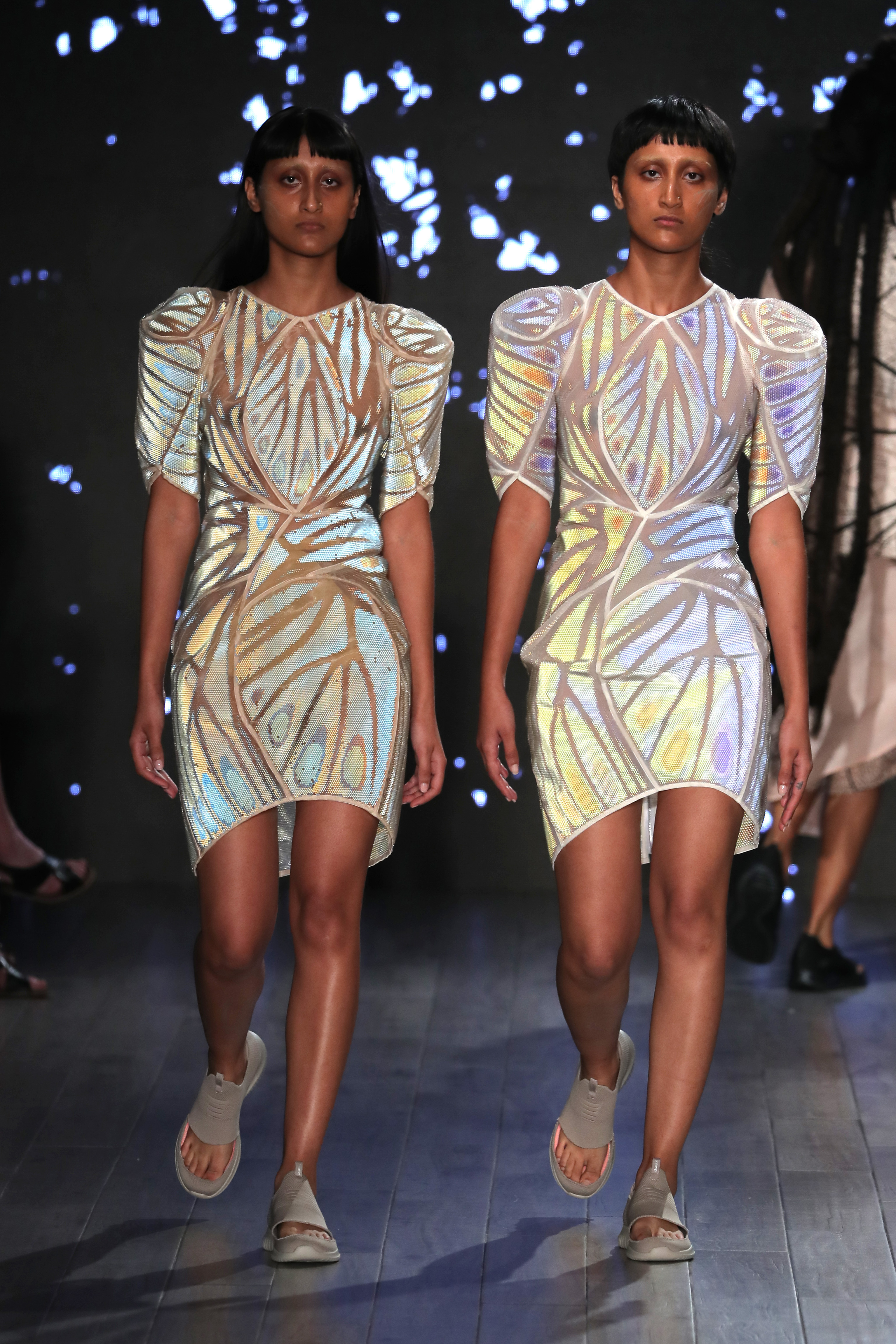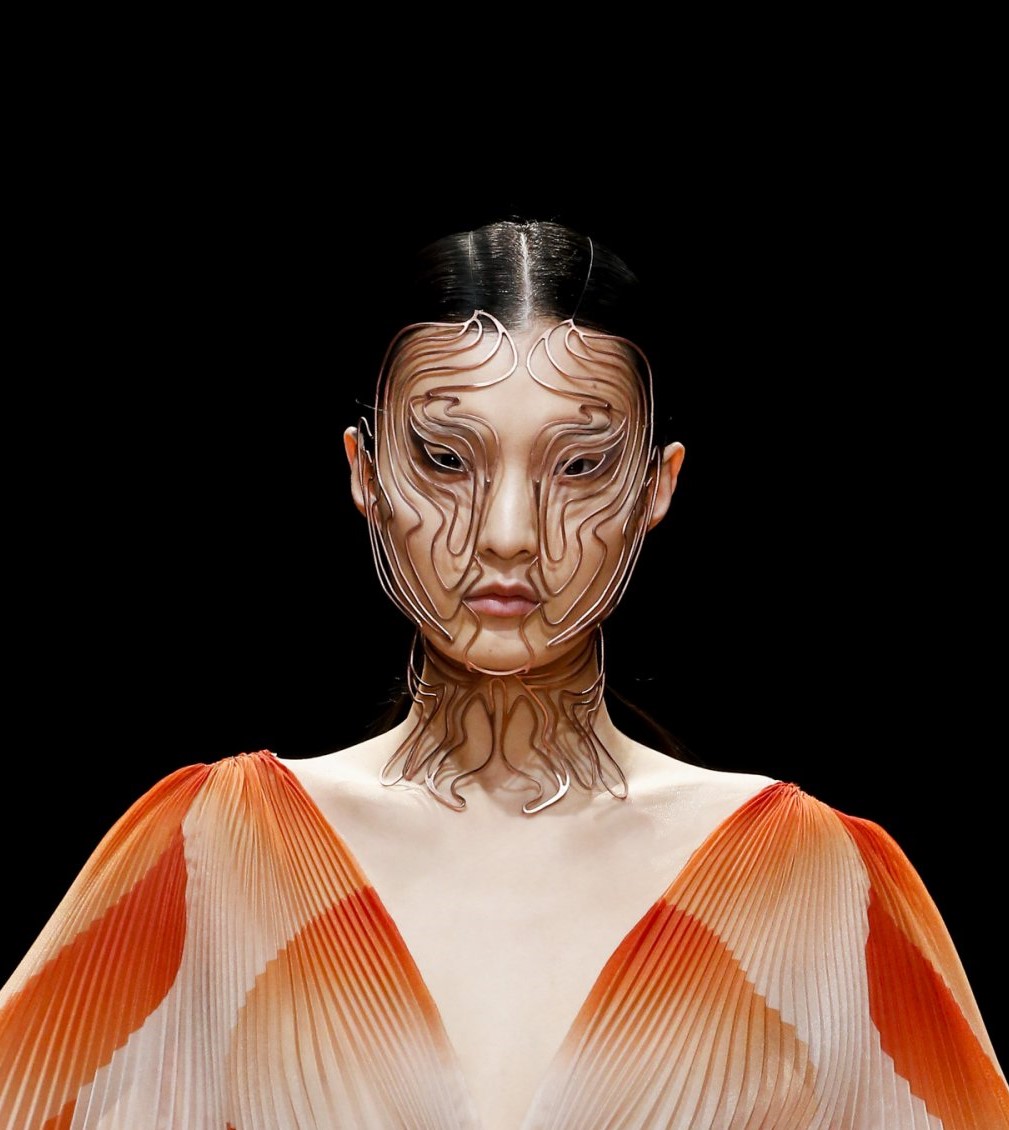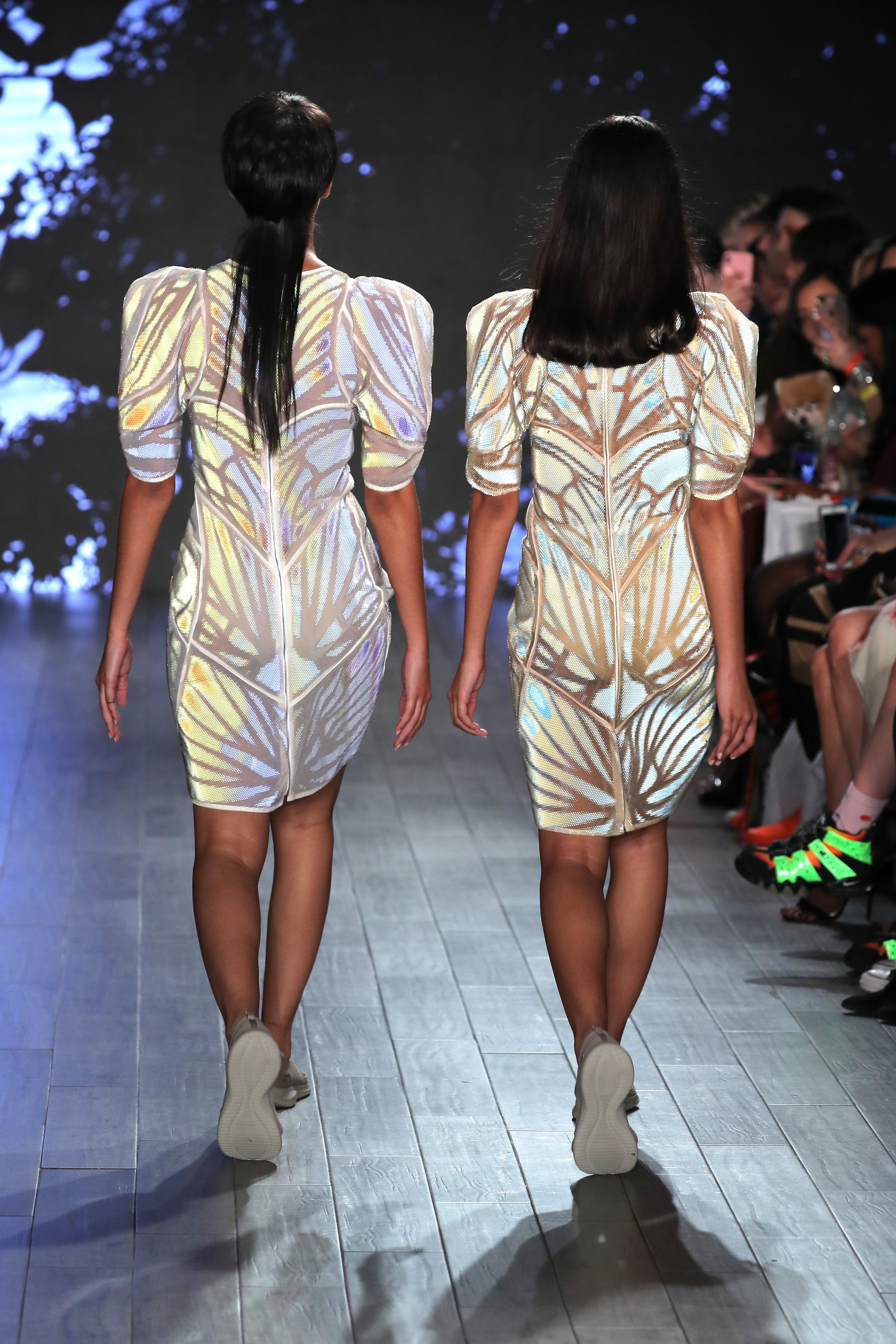As New York Fashion Week (NYFW) 2019 draws to a close, the prestigious clothing event flaunted a number of flamboyant designs and inventive collections. 3D printing has played an increasingly relevant role within recent major fashion events due to the creative freedom it offers designers, and this year’s NYFW was no different.
3D printing from Stratasys made an appearance at the event through a novel technique. The company unveiled the ability to 3D print directly onto fabric, in collaboration with esteemed fashion designers threeASFOUR and Travis Fitch.
Using the Stratasys J750 3D printer, polymers were added straight onto pieces in the ‘Chro-Morpho’ collection, showcased by models at threeASFOUR’s fall/winter runway show. Stratasys believes the technique represents the way forward for 3D printing in the fashion industry.
“We are always looking to revolutionize manufacturing methods, pioneer new design options, and inspire designers and students to create without boundaries,” said Naomi Kaempfer, Stratasys Art, Design and Fashion Director.
“Our mission is to change the way people think about design and to redefine what’s possible.”

3D printing in high-end fashion
3D printing has established itself as a mainstay technique over the years for fashion designers to create otherworldly statement pieces that would otherwise be difficult or impossible to produce. Thanks to pioneering designers like Iris Van Herpen, 3D printing has been embraced by many emerging designers including Mingjing Lin and House of Anesi founder Stephania Stefanakou, due to its flexible nature.
It also made a dazzling display at the Met Gala this year through American fashion designer Zac Posen. Enlisting the services of GE Additive and Protolabs, Posen created several outfits adorned with 3D printing, sported by the likes of Andrew Garfield and Nina Dobrev. The technology is also a regular of many films set costume departments, most notably of late helping in the fabrication of the Academy award-winning mantel and crown worn by Queen Ramonda in Marvel’s Black Panther.
In most of these instances, however, 3D printing has either been used to create separate elements affixed to fabric garments, or the entire piece of clothing itself. The technique of 3D printing directly onto clothing is seldom used due to the complexity of the process. Examples of note include Iris Van Herpen, who applied the method in 2018 in collaboration with TU Delft for her Spring/Summer collection at Paris Fashion Week.

Stratasys explains however that the direct 3D printing technique offers unparalleled flexibility and integrity, providing a tool for designers to create modern, functional apparel. It also represents the key to unlocking 3D printing’s commercial viability in the fashion industry, according to the company.
Its project with threeASFOUR and Travis Fitch is part of an ongoing effort towards merging fashion and 3D printing for high-end couture, and eventually, series production. Kaempfer added:
“Within the next two years, I believe consumers will be able to purchase an array of 3D printed garments from high-fashion brands. The result will be access to an explosion of unique color and texture combinations that are simply not possible through traditional methods.”
Creating harmony between 3D printing and textiles
The design of the Chro-Morpho collection shown is inspired by the microscopic colors and light filtering of butterfly and insect wings. The color morphology was captured thanks to the innovative direct 3D printing technique, using the J750 system.
“We’ve created the skin-like illusion of switching shades and depth to portray the insect’s innate camouflage, color diversion, and luminosity,” explained Adi Gill, co-founder and creative director of threeASFOUR. “With 3D design and printing, we’ve embodied the fragility and light wing movement of the butterfly. It’s a stunning display of nature, fashion, and technology.”
One dress from the collection was designed using a Stratasys-engineered lenticular effect to play with light and color, in order to replicate the appearance of the Greta-Oto butterfly. The capabilities of the J750 PolyJet 3D printer allowed the designers to print thousands of small, spherical cells made of photopolymers directly onto polyester fabric. Each cell on the dress’s 27 parts contains a clear lens with strips of color contained inside, which enabled the color of the dress to change as it moved. 3D printing the cells took approximately 17 hours.
Kaempfer explains the benefits of 3D printing onto textiles, stating that it allows designers to capture the nuances of their creative vision. Instead of thinking about how 3D printing can replace textile materials, they can consider how the two can work together and bring the best out in each other. Kaempfer continued:
“Soft, lithe fabric touches the skin, while 3D printed designs adorn the outer garment. This approach, developed through months of collaboration and testing, was the only way to realize the designers’ vision. It brings the intricacy, nuance and splendor of the dresses to life.”
The Chro-Morpho collection will henceforth make appearances in museums across North America. It will be displayed at the Philadelphia Museum of Art’s “Designs for Different Futures” exhibition beginning Oct. 21. The collection will also visit the Walker Art Center in Minneapolis and the Art Institute of Chicago in 2020.

Subscribe to the 3D Printing Industry newsletter for the latest news in additive manufacturing. You can also stay connected by following us on Twitter and liking us on Facebook.
Looking for a career in additive manufacturing? Visit 3D Printing Jobs for a selection of roles in the industry.
Featured image shows models walk the runway during wearing a dress from the Chro-Morpho collection in New York City. Photo via Thomas Concordia/Getty Images for Style360/Stratasys.


